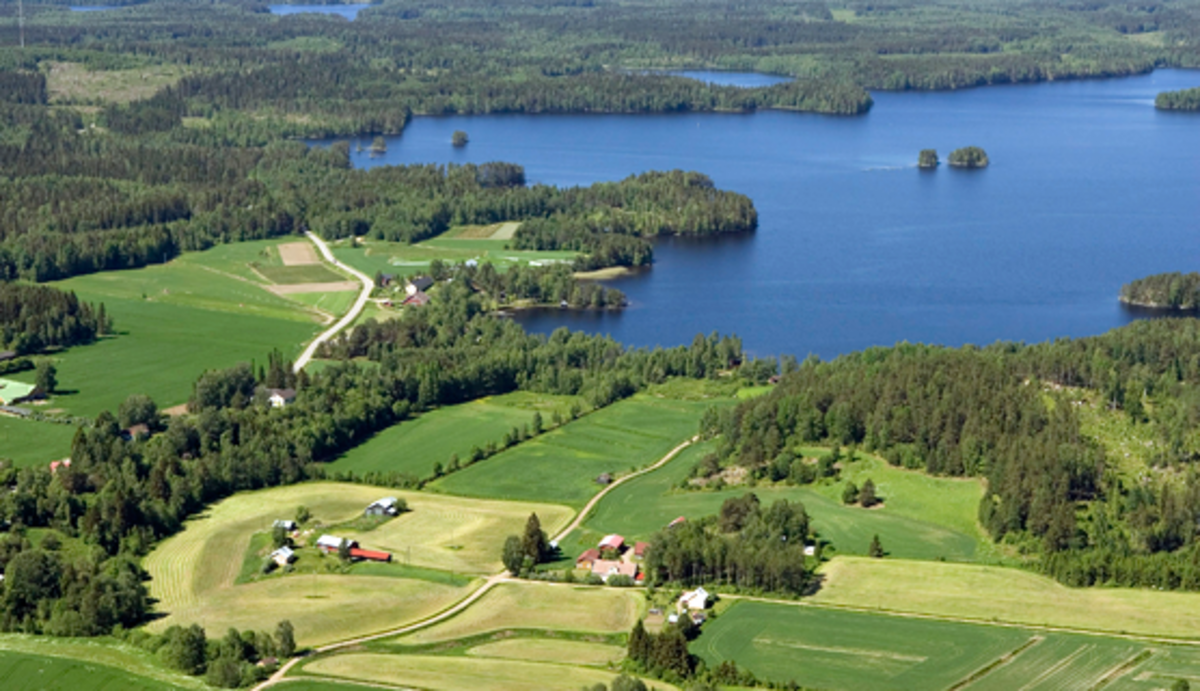In a recent special issue of the human environment journal Ambio, Biowater’s researchers have explored how the answer may be found in plausible scenarios, long-term datasets, and modelling. They have also studied how societies will be affected by these changes and investigated various environmental mitigation options.
A key question is how land use will change, and how this, in combination with climate change, will affect water quantity, quality and biology – and thereby the ecosystem services provided by water resources. Based on our research so far, it is safe to say that if bioeconomy does not develop in a sustainable way, the alterations of the rural landscape, in combination with expected climate change, will seriously affect freshwater resources.
The partners of the BIOWATER Centre are Finnish Environment Institute SYKE, Natural Resources Institute Finland (Luke) and University of Oulu that study the subject from a Finnish perspective.
“Impacts of drained peatland systems on nutrient and carbon loading to watercourses in Ostrobothnia, in north-western Finland is higher than expected earlier, and is increasing due to climate change. Particularly peatland-dominated Simojoki river basin in southern Lapland has a special focus in Biowater studies in Finland,” says Seppo Hellsten, Development Manager at SYKE.
“The research at University of Oulu has developed methods for improved numerical modelling to assess land use (drainage) and climate impacts on water resources, increased the understanding on renewable energy impacts on water resources and developed the understanding on how water quality changes effect ecology of rivers” says Bjørn Kløve, professor in water engineering.
Policy brief summarises the main messages – long-term monitoring data practices are crucial
There are 12 papers In Ambio, and the policy brief summarises the main message of each paper.
- If the development of a bioeconomy is not sustainable, there will be severe impacts on aquatic ecosystems that again will negatively affect societies and human welfare.
- Long-term monitoring data of water quality, quantity and land use practices are crucial for discovering new trends in our Nordic water resources, as warnings of bioeconomy impacts.
- Assuming that bioeconomy means increased production of biomass, it is unfortunate that systematic monitoring data of catchments dominated by different forestry practices are less available than data from agricultural and pristine catchments.
- Better targeting of mitigation measures (location and dimension) offers clear optimisation opportunities for improving surface water quality. Improved measures can therefore assist in reducing negative environmental side effects of a growing bioeconomy, while at the same time reducing unnecessary occupation of fertile land useful for the production of food, fodder, fibre and fuel.
Further information
- Development Manager Seppo Hellsten, Finnish Environment Institute SYKE, tel. +358 295 251 165, firstname.lastname@ymparisto.fi
- Research Professor Artti Juutinen, Natural Resources Institute Finland (Luke), tel. +358 295 325 341, firstname.lastname@luke.fi
- Professor Bjørn Kløve, University of Oulu, tel. +358 40 594 4514, firstname.lastname@oulu.fi
- Head of Department Eva Skarbovik, project-coordination, NIBIO Norway, tel. +47 416 28 622 firstname.lastname@nibio.no
Links
- News: Sustainable bioeconomy vital for freshwater resources (Norwegian Institute of Bioeconomy Research (NIBIO), 15 October 2020)
- Policy Brief: How green will a bioeconomy be for our Nordic water resources? (pdf)
- Ambio Special Issue: Environmental effects of a green bio-economy. Volume 49, issue 11, November 2020
- BIOWATER (2017-2022) is a Nordic Centre of Excellence, with a main goal to examine the impacts of the bioeconomy on land use and freshwater quality and quantity. There are eight institutes in four countries (Denmark, Finland, Norway and Sweden), and with five European collaborating partners in BIOWATER.
Policy brief: How green will a bioeconomy be for our Nordic water resources? (News, 6 November 2020)
